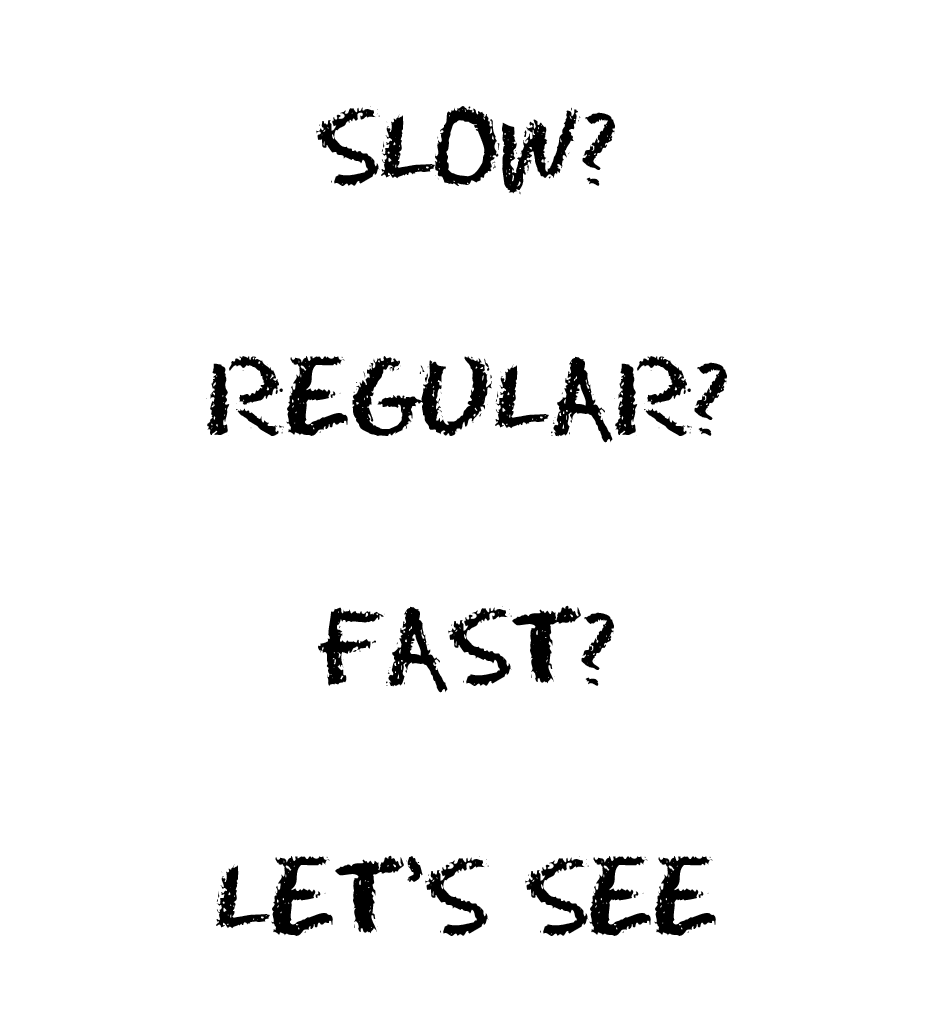If you want to know how fast you should perform dynamic push-ups to improve your push-up performance I will explain. There are three basic speeds I will cover – Slow, medium (regular) and fast. You will also be able to download a FREE 100-push-up cadence for each speed that you can use to perform the dynamic push-up.
A dynamic push-up has two phases (actions). The first phase is lowering (eccentric) the body to the ground and the second phase is pushing (concentric) the body up from the ground. When you change the speed that you perform this movement it can affect how many push-ups you will be able to do and how quickly you will get tired.
There are also other push-up actions you can perform such as eccentric and static or a combination of both which I have covered elsewhere. The dynamic push-up is the focus here because it is the most common. The first and safest one to perform is Dynamic “slow” push-ups.
Dynamic Slow Push-ups
A dynamic slow push-ups takes about three seconds to perform one repetition. It is also the most challenging of the three. Surprisingly, this is also the pace used by students who perform the push-up for the FITNESSGRAM® push-up test in public school.
My hat goes off to those students because the dynamic slow push-ups are tough! What make the push-ups so tough? Well, these push-ups will cause the upper body muscles to be under constant tension for the longest period compared to the dynamic regular and dynamic fast push-ups. The tension caused by this movement is also responsible for the greatest level of muscle activation compared to the dynamic regular and dynamic fast push-ups. The longer the muscle remains activated the greater the strength gains.
Another reason that these push-ups are tough is you have to control the movement from the start of the lowering phase of the push-up and throughout the pushing phase.
Compared to the fast and regular push-up, however, the dynamic slow push-up has the longest time that an individual can perform the push-ups before reaching muscle fatigue. The dynamic slow push-up also reduces your chances of elbow injury because of the slow movement you perform each push-up.
Who will benefit most from the Dynamic Slow Push-ups?
Athletes and people who want to develop muscle strength versus push-up speed and power. This push-up movement is also beneficial for helping beginners to learn the proper form. Because this movement is slow, the participant has more time to stabilize his/her muscles to support the body for a more controlled movement. A huge benefit of performing the dynamic slow push-ups is that it is an excellent pace for strengthening the pectoralis major (chest) and triceps (back of arms) compared to the dynamic regular push-ups and dynamic fast pushups. I would recommend the use of this technique before learning the dynamic regular push-up.
If you would like to receive a free 100-push-up cadence for the dynamic slow push-ups, you may access it here.
Press play icon below to hear a sample.
Disadvantages of the Dynamic Slow Push-ups?
The drawn back to performing the dynamic slow push-ups is less reps and less upper body power development. Some individuals may also experience discomfort caused by the extended period of performing this push-up. A more medium speed for performing the push-up is 1.5 seconds. I call this the dynamic regular push-ups
Dynamic Regular Push-ups
As I mentioned above, a dynamic regular push-up takes about 1.5 seconds to perform one repetition. This push-up is less challenging than the dynamic slow push-up but more difficult than the dynamic fast push-up.
The pace used to perform this push-up is reasonable because the muscle activation that occurs during the dynamic regular push-up is less than the dynamic slow push-ups.
This type of push-up is the most common for recreational users. The dynamic regular push-up does not cause the discomfort that the dynamic slow pushup may cause and the individual who is just learning how to perform push-ups at this speed will have an easier time transitioning to this pace from the dynamic slow push-ups.
Who will benefit most from the Dynamic Regular Push-ups?
Individuals who will benefit from using the dynamic regular push-up are those who want to remain physically fit by using the push-up as an exercise method. Because this push-up is also helpful for developing speed, the dynamic regular push-up can be used when training for a push-up test as well as preparing you to perform the dynamic fast push-ups with better form. If you would like to receive a free 100-push-up cadence for the dynamic regular push-ups, you may access it here.
Press play icon below to hear a sample.
Disadvantages of the Dynamic Regular Push-ups?
The drawn back to performing the dynamic regular push-up is less strength development compared to the dynamic slow push-ups. If your goal is develop upper body power, the dynamic regular push-up is a good start but not as effective as the dynamic fast push-ups.
Dynamic Fast Push-ups
The dynamic fast push-ups takes approximately 1 second to perform one push-up
In terms of muscle tension, this push-up is the least challenging compared to dynamic slow and dynamic regular push-ups. So why not have beginners perform this pushup first you might ask? Well, it takes excellent muscle coordination to execute these push-ups properly. It is for that reason I would recommend the performance of the push-ups in the progression I have outlined so far (i.e. Static and/or Eccentric, Static-Dynamic, Dynamic Slow, Dynamic Regular, and Dynamic Fast).
Again, the dynamic fast push-up movement requires the muscle to endure the least amount of tension compared to the dynamic slow push-up and dynamic regular push-up. Because the movement is performed at such a fast pace, the muscles are needed primarily for controlling the lowering phase of the push-ups and the pushing phase of the push-up. Given the fast pace required to perform this push-up, the individual will experience muscle fatigue before others who are performing the push-up at a regular or slow pace.
Who will benefit most from the Dynamic Fast Push-ups?
Individuals who would benefit from this type of pushup most are persons who are taking a “timed” push-up test for the military, law enforcement, FBI etc. Individuals who would like to develop muscular force will also benefit from performing dynamic fast push-ups. If you would like to receive a free 100-push-up cadence for the dynamic fast push-ups, you may access it here.
Press play icon below to hear a sample.
Disadvantages of the Dynamic Fast Push-ups?
The drawn back to performing the dynamic fast push-up is the increased possibility of injury. In a research that was conducted to evaluate the Effects of Pushup Speed on Elbow Joint Loading, it was determined that when the pushup is performed at a fast speed, the possibility of elbow injury is increased compared to the dynamic regular and dynamic slow pushup.
Finally, before wrapping up this topic I want to report the findings of a research conducted on the effects of push-up speed on the dynamic pushup maximum test and also the method that was used to identify a suitable cadence speed.
The Effects of Push-up Speed during Dynamic Push-up Maximum Test
In this study, the researchers organized three trials of 15 students to perform the maximum push-up assessment with each trial two weeks apart from each other.
In the first trial the students performed the push-ups at a fast pace of 84 beats per minute (bpm) (7 push-ups in /10 seconds), in the second trial the students performed the push-ups at a regular pace of 60bpm (5 push-ups/10 seconds) and in the third trial the students performed push-ups a slow pace at 48bpm (4 push-ups/10 seconds).
What the researchers observed were three findings. 1. The fast trial where the students performed the push-ups at 84bpm resulted in more push-ups than the regular and slow trial. 2. The slow trial where the students performed the push-ups at 48bpm resulted in significantly higher total muscle activation than the regular and fast trials, and 3. The trials where the students perform the push-ups at 48bpm resulted in a longer muscular endurance of performing push-ups.
So, based on the above research study and the information I’ve presented, you now have some information about how push-up speed will influence your push-up performance. Just to create a balance and challenge the muscles more, I would recommend the use of various muscle actions and speeds to perform the push-ups.
For example, if you are a beginner and you are training for a pushup fitness test, divide the number of weeks you have to train in the following way:
Begin with 25% of your training period to improve your core stability by performing the plank walks or static or eccentric muscle action. Next use another 25% of your training period to perform static-dynamic muscle action to strengthen the joint at the angle where the push-up is most challenging (i.e. when you are raising your body from the down position). Next use another 25% to perform the dynamic slow push-up for improving your form and muscular strength. Finally, use the last 25% to focus on dynamic regular push-up.
If you are a beginner, you should spend equal amounts of your time developing the technique, strength, and speed required to perform the push-up. As you improve in your push-up training, the percentage of time spent on each muscle action will change. For example you may eventually spend 50% or more of your training period focused on developing speed so that you can perform more repetitions with proper form.
Safety first: Exercise with caution. Make sure that you seek medical clearance from your physician if you decided to attempt this exercise.
Identifying Pushup Training Cadence Speeds
Wayne Westcott is a researcher and author of over 20 books dedicated to the field of exercise science. His suggested speeds for strength training are movements less than two seconds equal fast, between two to six seconds equal slow and between six to 10 seconds equal very slow
The researchers in the article reviewed suggested that their fast push-up speed was approximately 84bpm or less than two seconds per second.
For the purpose of meeting the needs of these speed ranges, which I agree, the cadences used for the dynamic fast push-ups is less than two seconds at one second per push-up.
The dynamic regular push-up is also less than two seconds at 1.5 seconds per push-ups. This speed was selected as a regular pace for individuals who should be able to achieve the results mentioned in the research study as well as individuals with long arms. Individuals with long arms tend to require more time to complete the push-up full range of motion. This speed was also selected because it was one-half the speed of dynamic slow push-ups.
The dynamic slow push-ups is 3 seconds and in line with Westcott’s two to six seconds movement protocol.
The dynamic-static and eccentric push-ups are at 10 seconds and also in line with Westcott’s recommendation for strength training speeds of 10 seconds or less.
References
So based on your preference for performing push-ups, you may use this as a guide with the push-up cadences I have offered to help you improve your push-up performance.
P. H. Chou, H. H. Hsu, S. K. Chen, S. K. Yang, C. M. KuoandY. L. Chou, “Effect of push-up speed on elbow joint loading,” Journal of Medical and Biological Engineering.,31: 161-168, 2011.
H.H. Hsu, Y.L. Chou, Y.P. Huang, M.J. Huang, S.Z. Lou, P.H. Chou, “Effect of push-up speed on upper extremity training until fatigue“, Journal of Medical and Biological Engineering. 31(4): 289-293, 2010.
Westcott, W. “The facts on slow-speed strength training“, Fitness Management, p. 26-27.,June 2003.
We Love to Help Build Community

As an Amazon Associate I earn from qualifying purchases.

